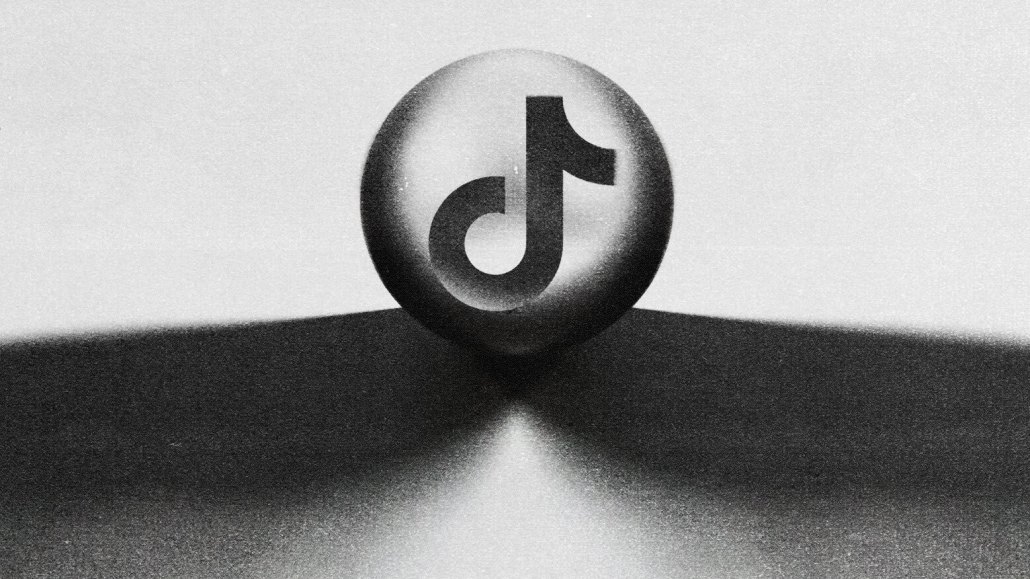Amid ban uncertainty, TikTok’s role in brands’ social presences has decreased

As a Digiday+ member, you were able to access this article early through the Digiday+ Story Preview email. See other exclusives or manage your account.This article was provided as an exclusive preview for Digiday+ members, who were able to access it early. Check out the other features included with Digiday+ to help you stay ahead
January’s TikTok outage has served as a wake-up call for brands, reinforcing the need to diversify their spending across multiple platforms to avoid over-reliance on a single channel.
That’s meant marketers have spent more on other platforms like Instagram and YouTube, both of which outpaced TikTok’s spend in the month following the platform’s Jan. 18 outage, representatives of influencer marketing companies Later, Collabstr, BENlabs and BrandCycle told Digiday.
Although major advertisers such as Unilever are upping their spending on influencer marketing — and some brands are continuing to increase their spending on TikTok — influencer marketers see this trend as evidence that brands are still hedging their bets around TikTok marketing amid the uncertainty surrounding the platform’s potential U.S. ban.
In 2024, brands’ spending on influencer marketing platform Collabstr was split evenly between Instagram and TikTok campaigns, according to Collabstr co-founder Kyle Dulay. Between Jan. 18 and March 18, however, the volume of TikTok orders on Collabstr were equal to only 47 percent of the volume of Instagram orders on the platform.
In the months following the January outage, influencer marketing company BENlabs observed several of its clients move their creator investments from TikTok to other platforms, with one snack brand whose spending on TikTok had previously accounted for roughly 50 percent of its influencer marketing budget shifting all of its expenditures to Meta platforms instead.
“The general consensus from brands is that they don’t necessarily think TikTok will be banned, but they do think the continued uncertainty is a risk for performance and want to wait until things are more solidified,” said BENlabs CEO Ted Sheffield. “As a response, many brands are moving budgets to platforms like Instagram Reels and YouTube Shorts to hedge against losing TikTok’s reach.”
In the lead-up to the end of Donald Trump’s TikTok ban extension on April 5, influencer marketing company Later also observed a significant shift in marketers’ platform strategy, with TikTok’s share of scheduled posts steadily decreasing — from 5.2 percent four weeks ahead of the potential ban (between March 10 and 14), to 4.5 percent for posts scheduled to publish during the week leading up to the potential ban (March 31 through April 4) and further to 3.9 percent for posts scheduled to publish between April 7 and 11, the week following the potential ban. During the same period, Instagram’s share of scheduled posts on Later’s platform respectively increased from 46.6 percent to 51 percent, and then to 53.3 percent of all posts.
“Brands and advertisers are skeptical that a ban will actually happen in earnest, although if it does, they are better prepared,” said Later CEO Scott Sutton.
Overall spending on TikTok posts is still up about 3 percent year over year for the past three months on Later’s platform, according to Later CMO Ryan Bonnici. However, a look into brands’ spending on other platforms shows that TikTok’s rivals have experienced significantly more growth during the same period.
“This same cohort of users are scheduling at a much higher frequency to other social profiles, which continues to climb,” Bonnici said. “We’re seeing a 15 percent lift in the frequency that this group schedules to other platforms over the last 90 days.”
BrandCycle general manager Erin Gagnon told Digiday that she had observed brands diversify their spending away from TikTok and toward other platforms in the months following the Jan. 18 outage, although she declined to share specific figures.
“It’s likely less of a pullback and more of a diversification — the hedging of the bets. So, if they invested $100,000 in TikTok, maybe now they’re investing $80,000 in TikTok and $20,000 in YouTube Shorts,” Gagnon said, specifying that the numbers she used were theoretical, rather than figures from a real BrandCycle campaign.
With the ban extension potentially coming to an end on April 5 — barring a further extension by Donald Trump, in any case — reports of TikTok’s impending acquisition have swirled around the internet, with Amazon and Oracle emerging as potential contenders. Regardless of what ultimately happens to the platform, influencer marketers are projecting confidence that TikTok will stick around in some shape or form.
“While many scenarios are possible, I anticipate another extension for the TikTok ban, with two possible scenarios,” Sutton said. “Either there will be an announcement that a ‘specific deal is in progress’ — or we’ll receive a generic statement from the current administration indicating they are working with interested parties, but cannot disclose the details.”
Confidence notwithstanding, the cat is out of the bag when it comes to advertisers’ approach to TikTok. Even if the short-form video platform finds a path forward in the U.S., brands and agencies that were previously focused on TikTok have learned that this approach is vulnerable to the whims of platforms and regulators, and have diversified their strategies accordingly.
“That class of agency, overnight, suddenly realized, ‘our skillset is predicated on being able to create content on a single channel, to a single audience,’” said Thomas Markland, founder and CEO of creator marketing company HYDP. “And the actual inherent value is actually relatively minimal there. For brands, I do think that it’s quite a worthwhile wake-up call.”
More in Media

Media Briefing: The top trends in the media industry for 2025
This week’s Media Briefing takes a look at the top trends from 2025, from digital advertising revenue performance to AI licensing deals.

Digiday Scorecard: Publishers rate Big Tech’s AI licensing deals
Digiday has compiled a scorecard grading AI platforms to make sense of the growing number of players in the AI content licensing market.

Publishers are hunting for AI prompt data — now they’re starting to get it from third-party companies
Publishers are finally gaining some visibility into AI search, as new prompt data tools crack open a black box.








